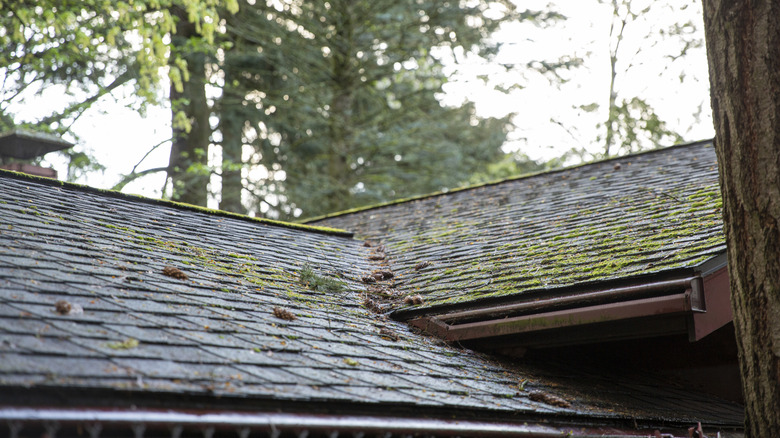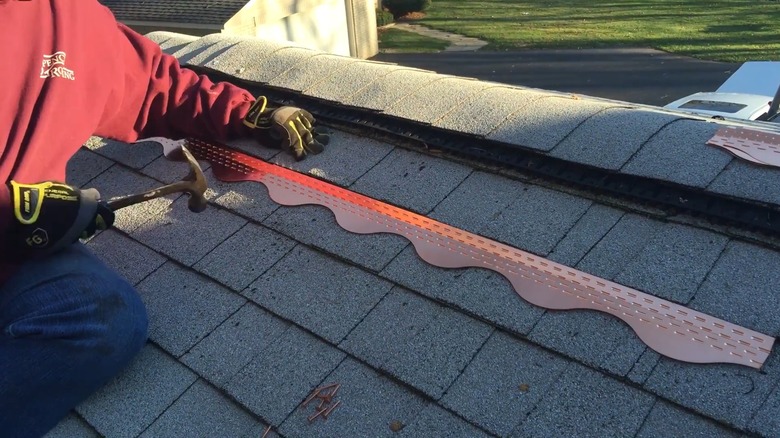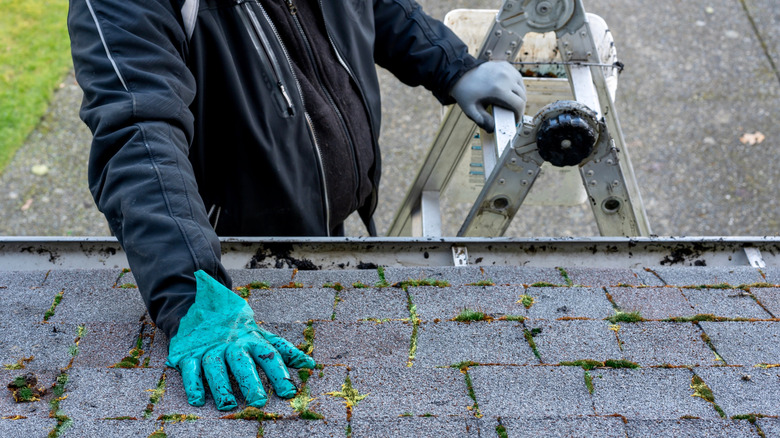The Solution To Help Prevent Shingle Damage
We may receive a commission on purchases made from links.
Between indoor and outdoor maintenance, the costs of owning a house can easily add up, and your roof may become one of your most expensive repairs. On average, homeowners spend anywhere from $6,000 to $13,000 installing a new roof. Many things, such as severe wind and storms, can shorten your roof's lifespan. However, moss is a common detriment that many people are unaware of. Roofing strips may be a viable solution for deterring moss from forming on your shingles.
Moss on your roof may seem innocent, but it's far from it. Not only does moss attract pests, but it spreads quickly and may weigh hundreds of pounds, putting stress on your entire roofing system. In addition, moss holds onto water that can damage your shingles by contributing to rot. Its roots can also make their way beneath your roof, forcing shingles to lift and causing structural damage like holes and leaks.
To prevent moss growth, consider installing roofing strips, which are commonly made from zinc or copper. These thin strips are installed along your roof's ridge line where the two planes of the roof meet, as it's an area where moss thrives. When water rolls over the metal strips, it carries with it ions that are poisonous to algae, moss, lichen, fungus, and mold. The lifespan of roofing strips varies due to climate and other factors, but you can expect zinc strips to last around five years, while copper lasts a few years longer.
What are the differences between copper and zinc roofing strips?
If left untreated, the havoc that moss wreaks on your roof may require repairs. Depending on the extent of the issue, the cost of repairing your roof can come in between $386 to $1875. All roofs are susceptible to moss growth but if parts of your roof are shaded by trees, chimneys, or other structures, you are more likely to develop moss.
With that in mind, zinc or copper roofing strips may be a wise investment to prevent future repair costs. Zinc is often less expensive to initially install. However, zinc has less coverage than copper, so it isn't suitable for large roofs. In addition, zinc strips may warp over time, which can cause water damage. Since zinc has a shorter lifespan, you will also need to replace it sooner than copper. Finally, zinc is toxic to fish, so it isn't the right choice if you live in a coastal area.
On the other hand, copper boasts a much wider coverage than zinc, making it a great option for larger roofs. While zinc needs to be placed at intervals along your roof, copper usually only needs to be installed at the top. In addition, copper is more durable than zinc, so it is less likely to warp and holds up well under harsh weather. Although installing copper costs three to six times as much as zinc, it is a more environmentally friendly option as it doesn't release harmful chemicals.
Other ways to keep moss of your roof
While roof strips are one way to combat moss, you can also prevent its growth by cleaning your roof. Generally, you should have your roof cleaned (or clean it yourself) once per year. If you decide to tackle it on your own, take appropriate safety measures. For example, make sure you have a spotter anytime you're on a ladder in case of slips or falls. It's not a bad idea to have slip-resistant shoes and a helmet, either. You can also invest in roof safety kits like TRSMIMA's Safety Kit, which includes a full-body harness for $56.99.
When cleaning, avoid using a pressure washer or harsh chemicals, as these can damage your shingles. All you need is a garden house, soft brush or broom, and a cleaning solution with bleach. If there is already moss present, you will have to remove it before washing; you can start by scrubbing the moss with a soft-bristled, long-handled brush, and then spray it with a moss killer. You can purchase these pre-made or make your own environmentally friendly mixture with a gallon of water, one cup of white vinegar, and ¼ cup of salt. After spraying it on your roof, give it time to soak into the moss before going ahead with your wash.


